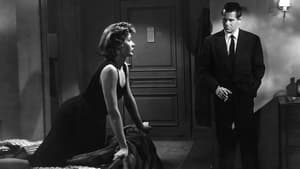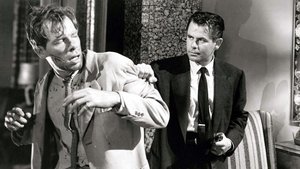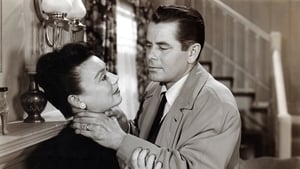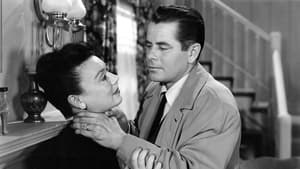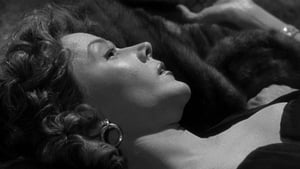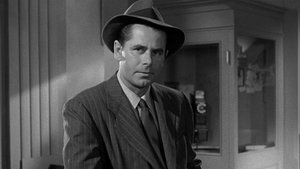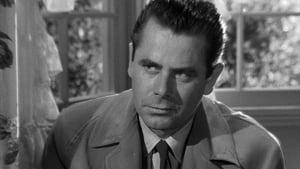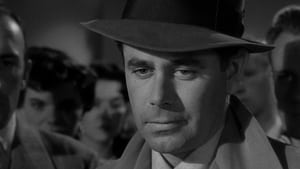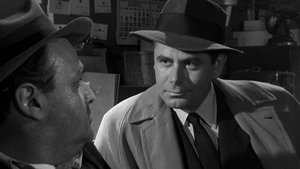Contact: [email protected]
Video Sources 0 Views
- Watch trailer
- The Big Heat


Synopsis
Table of Contents
ToggleDelving into the Depths of Corruption: Unraveling “The Big Heat” (1953) Review

Introduction
In the annals of cinematic history, few genres evoke as much fascination and intrigue as film noir. Defined by its stark visuals, morally ambiguous characters, and labyrinthine plots, film noir continues to captivate audiences decades after its inception. Among the pantheon of noir classics, “The Big Heat” (1953) stands as a shining example of the genre’s enduring allure. In this article, we embark on a journey through the gritty underworld of crime and corruption to explore the timeless appeal of “The Big Heat,” dissecting its narrative intricacies, analyzing its thematic depth, and examining its impact on the cinematic landscape.
Check The Full Colorized Movies List
Check Our Colorized Movies Trailer Channel
Understanding “The Big Heat” (1953): Director, Cast, and Genre
Directed by the prolific filmmaker Fritz Lang, “The Big Heat” (1953) is a quintessential example of classic film noir. Lang, renowned for his masterful command of atmosphere and tension, brings his directorial prowess to bear in this gripping tale of corruption and revenge. The film features a stellar cast, including Glenn Ford, Gloria Grahame, and Lee Marvin, each delivering riveting performances that breathe life into their characters. Set against the backdrop of a corrupt and morally bankrupt city, “The Big Heat” explores themes of betrayal, redemption, and the indomitable human spirit.
Exploring the World of “The Big Heat” (1953): Plot and Characters
At its core, “The Big Heat” unfolds as a classic noir narrative, following the journey of Detective Sergeant Dave Bannion (Glenn Ford) as he investigates the mysterious suicide of a fellow officer. As Bannion delves deeper into the case, he uncovers a web of corruption and deceit that stretches to the highest echelons of power. Along the way, he forms an uneasy alliance with a vengeful widow named Debby Marsh (Gloria Grahame), whose own quest for justice leads them both down a dangerous path. As tensions escalate and loyalties are tested, Bannion must confront his own demons while battling against forces intent on destroying him.
The characters in “The Big Heat” are as multifaceted as they are compelling, each grappling with their own inner turmoil and moral ambiguities. From Bannion’s relentless pursuit of justice to Debby Marsh’s tragic descent into darkness, the film’s protagonists are driven by complex motivations and conflicting desires. Likewise, the antagonists, led by the malevolent mob boss Mike Lagana (Alexander Scourby) and his sadistic enforcer Vince Stone (Lee Marvin), exude an aura of menace and ruthlessness that heightens the film’s tension and suspense.
The Art of Film Noir: A Brief History
Before delving deeper into the nuances of “The Big Heat,” it is essential to understand the stylistic and thematic conventions that define film noir. Emerging in the aftermath of World War II, film noir reflected the prevailing anxieties and uncertainties of the post-war era, characterized by its moody cinematography, cynical worldview, and morally ambiguous characters. Drawing inspiration from pulp fiction, hardboiled detective novels, and German expressionism, film noir offered a dark and nihilistic commentary on the human condition, exploring themes of alienation, disillusionment, and existential despair.
“The Big Heat” (1953) and Its Enduring Legacy
Since its release, “The Big Heat” has left an indelible mark on the cinematic landscape, influencing countless filmmakers and shaping the evolution of the film noir genre. From its searing indictment of corruption and abuse of power to its unflinching portrayal of violence and betrayal, the film continues to resonate with audiences across generations. Moreover, “The Big Heat” has sparked renewed interest in the works of Fritz Lang, cementing his status as a master of the noir thriller and ensuring his enduring legacy in the annals of cinematic history.
Examining “The Big Heat” (1953) as a Masterpiece of Noir
For many cinephiles, “The Big Heat” represents the epitome of classic film noir, combining a gripping narrative with stunning visuals and powerhouse performances. From its iconic use of chiaroscuro lighting to its sharp dialogue and unforgettable characters, the film exemplifies the hallmarks of the genre while pushing its boundaries in new and unexpected directions. Whether viewed in its original black-and-white format or in the newly colorized version, “The Big Heat” continues to captivate audiences with its timeless themes and timeless appeal.
Director’s Cinematic Legacy: Beyond “The Big Heat” (1953)
For Fritz Lang, “The Big Heat” represents but one chapter in a storied career that spanned over five decades. Throughout his prolific career, Lang demonstrated a remarkable versatility, directing films across a wide range of genres, from silent epics to sprawling historical dramas. While “The Big Heat” remains one of his most celebrated works, Lang’s cinematic legacy extends far beyond this singular achievement, encompassing a diverse and eclectic body of work that continues to inspire and influence filmmakers around the world.
Themes Explored in “The Big Heat” (1953)
At its core, “The Big Heat” explores a variety of themes that resonate with audiences on a profound and visceral level. From the corrosive effects of power and corruption to the redemptive power of love and justice, the film invites viewers to confront the darker aspects of human nature while grappling with questions of morality, ethics, and the pursuit of truth. Through its richly drawn characters and thought-provoking narrative, “The Big Heat” offers a compelling meditation on the complexities of the human condition, challenging viewers to confront their own beliefs and values in the process.
Reception and Controversy Surrounding “The Big Heat” (1953)
Upon its initial release, “The Big Heat” received widespread critical acclaim for its searing indictment of corruption and its unflinching portrayal of violence. However, the film’s legacy was not without controversy, as some critics took issue with its graphic depiction of brutality and its bleak view of human nature. Nevertheless, “The Big Heat” has endured as a classic of the genre, garnering a devoted following of fans and earning its rightful place in the pantheon of film noir masterpieces.
Where to Watch “The Big Heat” (1953) Online
For those eager to experience the dark charms of “The Big Heat,” the film is readily available for streaming on various platforms, including Amazon Prime, iTunes, and Google Play. Whether viewed in its original black-and-white format or in the newly colorized version, “The Big Heat” offers audiences an immersive and unforgettable journey into the heart of noir cinema, where shadows lurk around every corner and danger awaits at every turn.
FAQs About “The Big Heat” (1953)
Q: Who directed “The Big Heat” (1953), and what other notable works are attributed to them?
A: “The Big Heat” (1953) was directed by the acclaimed filmmaker Fritz Lang, known for his groundbreaking contributions to the world of cinema. Lang’s directorial portfolio includes other notable works such as “Metropolis” (1927), “M” (1931), and “The Testament of Dr. Mabuse” (1933), showcasing his mastery of various cinematic styles and genres.
Q: What prompted the decision to release “The Big Heat” (1953) in a colorized format, and how has this decision been received by fans and critics?
A: The decision to release “The Big Heat” (1953) in a colorized format was likely driven by a desire to introduce the film to new audiences and provide existing fans with a fresh perspective on this classic noir thriller. While some purists may argue that colorization compromises the film’s artistic integrity, others appreciate the opportunity to see it in a new and immersive way. Ultimately, the reception of the colorized version has been mixed, with opinions varying depending on individual preferences and appreciation for the film’s original presentation.
Q: What are some common themes explored in “The Big Heat” (1953), and how do these themes contribute to the film’s enduring appeal?
A: “The Big Heat” (1953) explores a variety of themes, including corruption, betrayal, revenge, and redemption, which resonate with audiences due to their timeless relevance and universal significance. Through its gripping narrative and well-drawn characters, the film invites viewers to reflect on their own values and beliefs, sparking thought-provoking discussions about the complexities of the human condition and the pursuit of justice in a morally compromised world.
Q: Where can viewers watch “The Big Heat” (1953) online, and are there any special features or bonus content available with certain streaming platforms?
A: “The Big Heat” (1953) is available for streaming on various platforms, including Amazon Prime, iTunes, and Google Play, making it easily accessible to audiences worldwide. While the availability of special features and bonus content may vary depending on the streaming platform, viewers can often find additional insights, behind-the-scenes footage, and commentary from filmmakers and cast members, enhancing their overall viewing experience and deepening their appreciation for this classic noir thriller.
Conclusion
In conclusion, “The Big Heat” (1953) stands as a testament to the enduring legacy of film noir, offering audiences a tantalizing glimpse into the dark and twisted world of crime and corruption. From its evocative cinematography to its morally ambiguous characters, the film captivates viewers with its brooding atmosphere and labyrinthine plot. Whether viewed in its original black-and-white format or in the newly colorized version, “The Big Heat” continues to enthrall audiences with its timeless themes and timeless appeal. As we navigate the murky waters of the human psyche, “The Big Heat” reminds us that, in the end, the line between good and evil is often blurred, and redemption is a journey fraught with peril and uncertainty.
